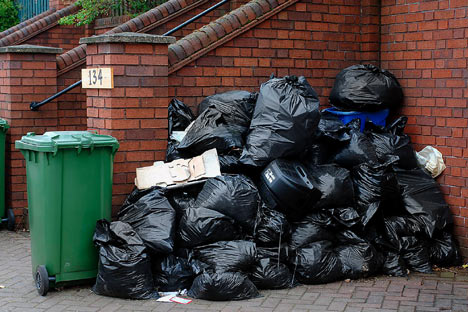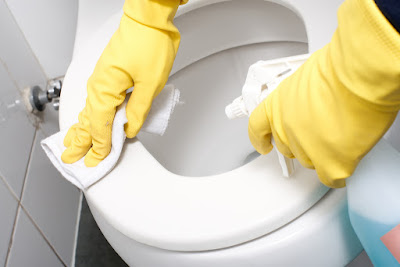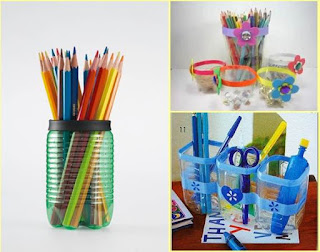3 Best Bin Liners & Refuse Sacks to Tackle with your Rubbishes
Waste disposal is a matter of seriousness that needs to be treated with care. Whether general household waste, restaurant waste, Industrial waste or clinical waste, if not disposed of properly, can harm the environment and the people living around very badly.
You will require bin bags to properly dispose of these wastes in an adequate manner. Today there are a range of bin liners and refuse sacks available to dispose of the waste matters in an eco-friendly way. These bin liners and refuse sacks can reduce the impact on the environment while getting the job done right.
Eco-Friendly Bin Liners & Refuse Sacks
Easy to use, eco-friendly and available in a range of sizes, these bin bags are ideal for landfill disposal or composting as they are completely biodegradable when buried or put in prolonged contact with soil.
Ideal for kitchen, fruit, vegetable and garden waste, there are biodegradable bin bags completely disintegrate into carbon dioxide, water and biomass within 10-12 weeks in standard composting condition - leaving ‘no’ harmful residue behind.
3 Major Bin Liners and Refuse Sacks
- Black Refuse Bags
- Coloured/Clear Refuse Sacks
- White Bin Liners
1. The Black Refuse Bags are the UK’s best range of black waste sacks perfect
for everyday use. They range from lightweight to Ultra Thick weight which will strike a perfect balance between bag strength and price. The Ultra thick Refuse bags are thick enough so they don’t rip easily, but not too hard on the wallet either. As a popular choice, these are the recommended bags for standard medium duty applications.
2. Coloured or Clear Refuse Sacks fit into the most types of bins and are ideal for household, office, garden or building rubbish. They are made from a recycled film but are very strong. You can avail a range of medium duty coloured refuse sacks made from 100% recycled polyethene so that you can go green (or blue, red, white or yellow) without paying much. Coloured refuse sacks can be used in the recycling bins to separate recyclable rubbish.
The Clear Waste Sacks are becoming more and more popular as the waste contents can be seen. It is very useful for security and ensures that only the correct type of items are put in the sack. The Clear Waste Sacks guarantees to reduce the levels of waste in your organisation.
3. White Bin Liners:
The white bin refuse liners are perfect for separation of the house or industrial waste products, ensuring you can keep your rubbish simple and organised. Similar to the standard black refuse liner counterparts, these 160 gauge liners are strong, but don't sacrifice on their great value. These bags are commonly used for removing garden waste products and rubbishes.
These 3 major range of polyethene bin liners and refuse sacks are durable and sturdy enough for waste collection according to their nature and type. The Medium Duty bin bags are suitable for general household waste collection and while the Heavy Duty bin bags are more suited to the restaurant and Industrial use.
If you require a bin bag for wet waste, garden rubbish or heavy Industrial waste then the Extra Heavy Duty or even the compactor sacks are the ones to go for.
The range includes laundry bags with a soluble strip so that contact with soiled items can be avoided. The sealed bag is then placed in the wash as then strip dissolves, and the soiled items are released into the water.
You will also find a full selection of pedal and swing bin liners for a variety of bins.
What is Bin liner gauge?
Gauge is the measurement of the thickness of standard low-density plastic bags. The thickness of the bin liner gauge is the bag itself. It is related to the SI measurement of microns as 1 micron = 4 gauge. The typical gauge sizes and microns equivalent are:
- 100 gauge = 25 microns = the light Duty, economy black bin liner typically sold in discount stores.
- 120 gauge = 30 microns = Medium duty, this would be the standard bin liner.
- 140 gauge = 40 microns = Medium Duty, most popular thickness bag for refuse sacks.
- 160 gauge = 40 microns = Extra Medium Duty for General purpose, strong quality black bin liner for domestic use.
- 200 gauge = 50 microns = Heavy duty bag, suitable for commercial waste.
- 300 gauge = 75 microns = Extra Heavy duty, ideal for building & garden waste.
- 500 gauge = 125 microns = normally a rubble sack for building waste.
You can choose between thick bin liners or thin bin liners. Regardless of thickness, the bags may tear off with sharp objects such as glass and metal. The thicker bags will not tear easily without first being torn or punctured. Some bags will be made from medium or high-density polyethene. This most certainly makes them more crinkly (like the typical supermarket bags you will find) and can be made thinner for the same strength.








Comments
Post a Comment